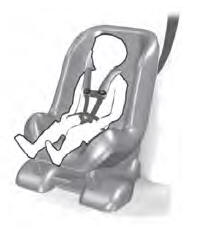Lincoln Aviator: Charging System - General Information / Description and Operation - Charging System - Overview
Overview
The generator is driven by the FEAD belt. When the engine is started, the generator begins to generate AC voltage which is internally converted to DC voltage. The DC voltage level is controlled by the voltage regulator (located on the rear of the generator) and is supplied to the battery.
The PCM controls the voltage regulation setpoint and communicates this information to the generator internal voltage regulator over a LIN communication circuit.
This vehicle is equipped with an Electrical engergy management system (load shed strategy). The BCM monitors the battery state of charge using information from the battery monitoring sensor attached to the negative battery post and manages battery charging.
The PCM monitors the generator current using the generator current sensor attached to the generator B+ battery cable. The information supplied to the PCM from the generator current sensor is used by the PCM to adjust the engine idle stability and torque control.
 Description and Operation - Charging System - System Operation and Component Description
Description and Operation - Charging System - System Operation and Component Description
System Operation
System Diagram
Item
Description
1
PCM
2
GWM
3
IPC
4
Generator
5
Generator current sensor
6
HS-CAN1
7
HS-CAN1
8
HS-CAN3
9
BCM
10
Battery monitoring sensor
Network Message Chart
Module Network Input Messages — Body Control Module (BCM)
Broadcast Message
Originating Module
Message Purpose
Alternator fault
PCM
The PCM has detected a fault in the generator or generator circuits...
Other information:
Lincoln Aviator 2020-2025 Service Manual: Removal and Installation - SYNC Module [APIM]
Special Tool(s) / General Equipment Interior Trim Remover Removal NOTE: Removal steps in this procedure may contain installation details. Position the park aid switch out, disconnect the electrical connector and remove the park aid switch assembly...
Lincoln Aviator 2020-2025 Owners Manual: Adjusting the Steering Wheel - Vehicles With: Power Adjustable Steering Column
WARNING: Do not adjust the steering wheel when your vehicle is moving. Note: Make sure that you are sitting in the correct position. Use the control on the side of the steering column to adjust the position. To adjust: Tilt: Press the top or bottom of the control...
Categories
- Manuals Home
- Lincoln Aviator Owners Manual
- Lincoln Aviator Service Manual
- Changing the Front Wiper Blades - Vehicles With: Heated Wiper Blades
- Description and Operation - Body and Frame
- Resetting the System
- New on site
- Most important about car
Child Seats

Use a child restraint (sometimes called an infant carrier, convertible seat, or toddler seat) for infants, toddlers and children weighing 40 lb (18 kg) or less (generally four-years-old or younger).
Using Lap and Shoulder Belts
WARNING: Do not place a rearward facing child restraint in front of an active airbag. Failure to follow this instruction could result in personal injury or death.

